
How to Use Solar Panel: Examples, Pinouts, and Specs
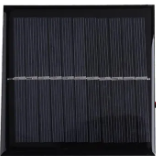
 Design with Solar Panel in Cirkit Designer
Design with Solar Panel in Cirkit DesignerIntroduction
A solar panel, also known as a photovoltaic (PV) panel, is a device that converts sunlight into electrical energy using photovoltaic cells. These cells are made of semiconductor materials that generate electricity when exposed to sunlight. Solar panels are widely used in renewable energy systems to provide clean and sustainable power.
Explore Projects Built with Solar Panel
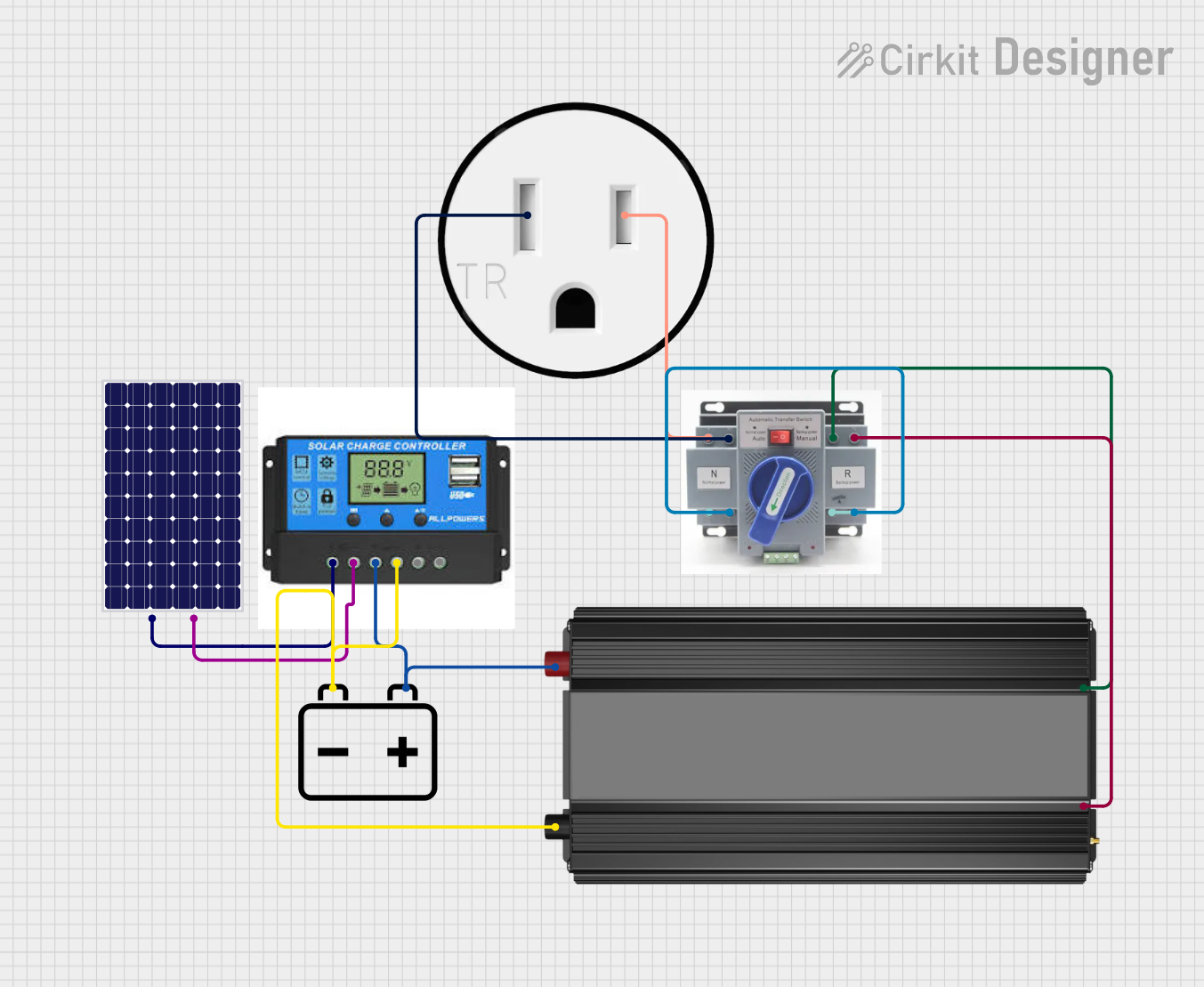
 Open Project in Cirkit Designer
Open Project in Cirkit Designer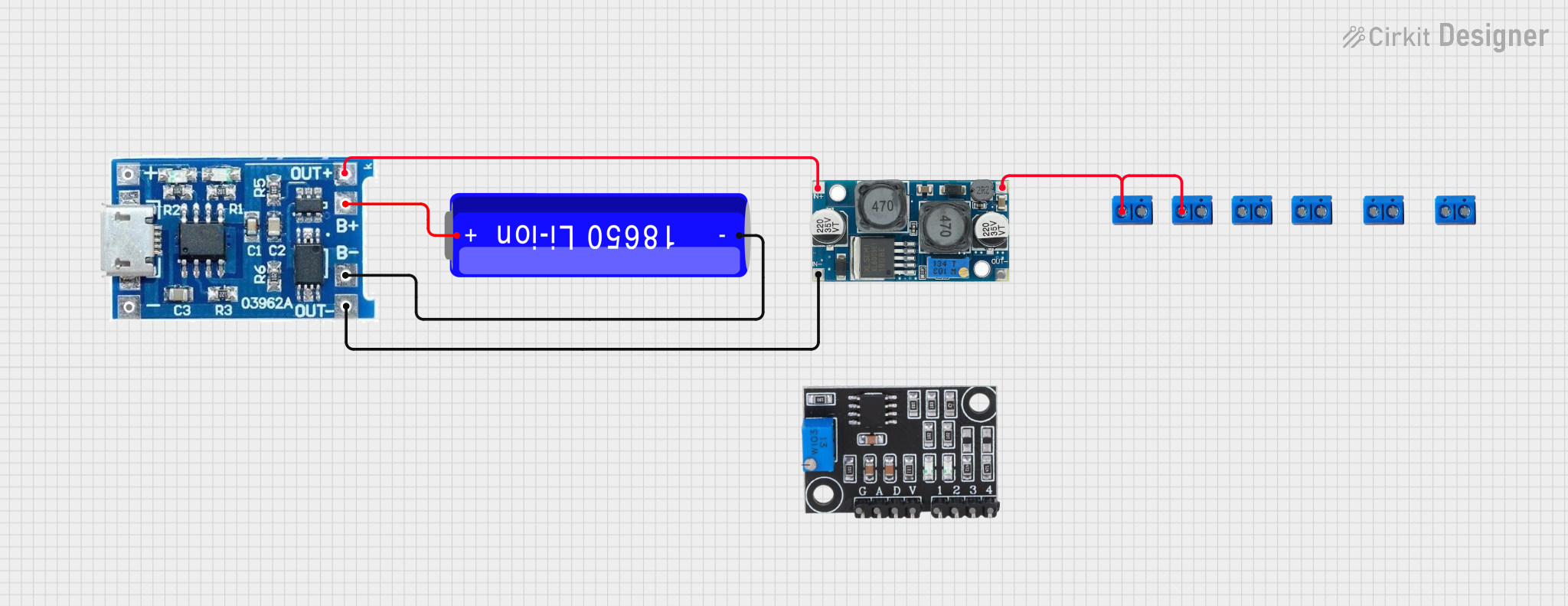
 Open Project in Cirkit Designer
Open Project in Cirkit Designer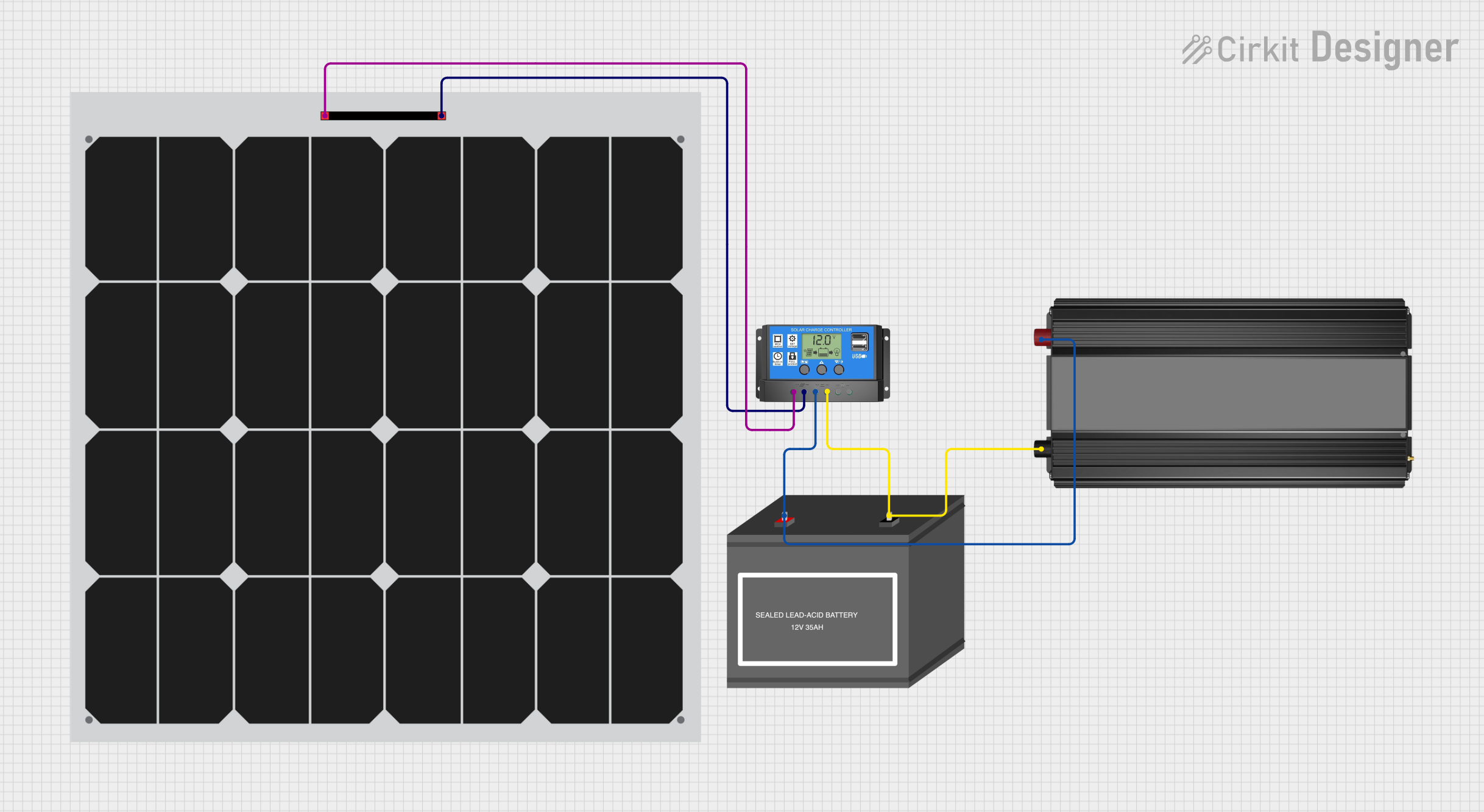
 Open Project in Cirkit Designer
Open Project in Cirkit Designer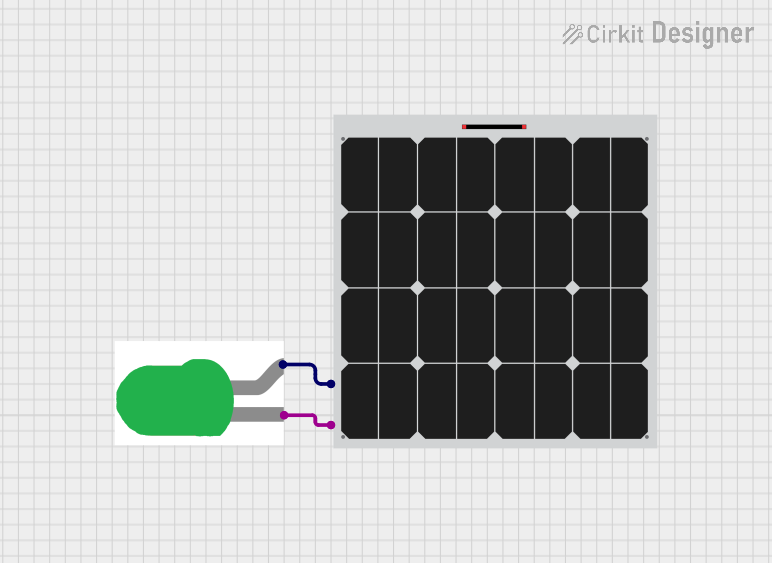
 Open Project in Cirkit Designer
Open Project in Cirkit DesignerExplore Projects Built with Solar Panel

 Open Project in Cirkit Designer
Open Project in Cirkit Designer
 Open Project in Cirkit Designer
Open Project in Cirkit Designer
 Open Project in Cirkit Designer
Open Project in Cirkit Designer
 Open Project in Cirkit Designer
Open Project in Cirkit DesignerCommon Applications and Use Cases
- Residential and commercial solar power systems
- Off-grid power solutions for remote areas
- Solar-powered devices (e.g., calculators, lights, and chargers)
- Integration with battery storage systems
- Solar-powered water pumps and irrigation systems
Technical Specifications
Below are the general technical specifications for a typical solar panel. Note that actual values may vary depending on the specific model and manufacturer.
| Parameter | Value |
|---|---|
| Manufacturer | Unknown |
| Part ID | Solar |
| Power Output | 10W to 300W (varies by model) |
| Voltage (Open Circuit) | 18V to 45V (varies by model) |
| Current (Short Circuit) | 0.5A to 8A (varies by model) |
| Efficiency | 15% to 22% |
| Operating Temperature | -40°C to +85°C |
| Dimensions | Varies (e.g., 1000mm x 500mm) |
| Weight | Varies (e.g., 2kg to 20kg) |
| Connector Type | MC4 or bare wire |
Pin Configuration and Descriptions
Solar panels typically have two output terminals for electrical connections:
| Pin | Description |
|---|---|
| Positive (+) | Positive terminal for DC output |
| Negative (-) | Negative terminal for DC output |
Usage Instructions
How to Use the Solar Panel in a Circuit
- Positioning the Solar Panel: Place the solar panel in a location with maximum sunlight exposure. Ensure it is angled correctly based on your geographic location to optimize energy generation.
- Connecting to a Load or Battery:
- Use the positive (+) and negative (-) terminals to connect the solar panel to a charge controller.
- The charge controller regulates the voltage and current to safely charge a battery or power a load.
- Wiring:
- Use appropriate gauge wires to handle the current output of the solar panel.
- Ensure all connections are secure and weatherproof if used outdoors.
- Integration with an Inverter:
- If powering AC devices, connect the battery or charge controller output to an inverter to convert DC to AC.
Important Considerations and Best Practices
- Avoid Shading: Even partial shading on the panel can significantly reduce its efficiency.
- Overcurrent Protection: Use fuses or circuit breakers to protect the system from overcurrent conditions.
- Temperature Effects: High temperatures can reduce the efficiency of the solar panel. Ensure proper ventilation.
- Cleaning: Regularly clean the surface of the panel to remove dirt, dust, and debris for optimal performance.
- Series and Parallel Connections:
- Connect panels in series to increase voltage.
- Connect panels in parallel to increase current.
Example: Connecting a Solar Panel to an Arduino UNO
To measure the voltage output of a solar panel using an Arduino UNO, you can use a voltage divider circuit. Below is an example code:
// Example code to measure solar panel voltage using Arduino UNO
// Ensure the voltage divider reduces the panel's voltage to within 0-5V range
const int analogPin = A0; // Analog pin connected to the voltage divider
float voltage = 0.0; // Variable to store the measured voltage
const float R1 = 10000; // Resistor R1 in the voltage divider (10k ohms)
const float R2 = 10000; // Resistor R2 in the voltage divider (10k ohms)
void setup() {
Serial.begin(9600); // Initialize serial communication
}
void loop() {
int sensorValue = analogRead(analogPin); // Read analog value (0-1023)
// Calculate the input voltage to the voltage divider
voltage = (sensorValue * 5.0 / 1023.0) * ((R1 + R2) / R2);
// Print the measured voltage to the Serial Monitor
Serial.print("Solar Panel Voltage: ");
Serial.print(voltage);
Serial.println(" V");
delay(1000); // Wait for 1 second before the next reading
}
Troubleshooting and FAQs
Common Issues and Solutions
Low Power Output:
- Cause: Insufficient sunlight or shading on the panel.
- Solution: Ensure the panel is in direct sunlight and free from obstructions.
No Output Voltage:
- Cause: Loose or incorrect wiring.
- Solution: Check all connections and ensure proper polarity.
Overheating:
- Cause: Poor ventilation or high ambient temperature.
- Solution: Install the panel in a well-ventilated area and avoid placing it on heat-absorbing surfaces.
Inconsistent Output:
- Cause: Fluctuating sunlight or dirty panel surface.
- Solution: Clean the panel regularly and consider using a battery for energy storage.
FAQs
Q: Can I connect a solar panel directly to a battery?
A: It is not recommended. Use a charge controller to prevent overcharging or damaging the battery.Q: How do I calculate the number of panels needed for my system?
A: Determine your energy requirements (in watt-hours) and divide by the daily energy output of a single panel.Q: Can solar panels work on cloudy days?
A: Yes, but the output will be significantly reduced compared to sunny conditions.Q: How long do solar panels last?
A: Most solar panels have a lifespan of 20-25 years with proper maintenance.